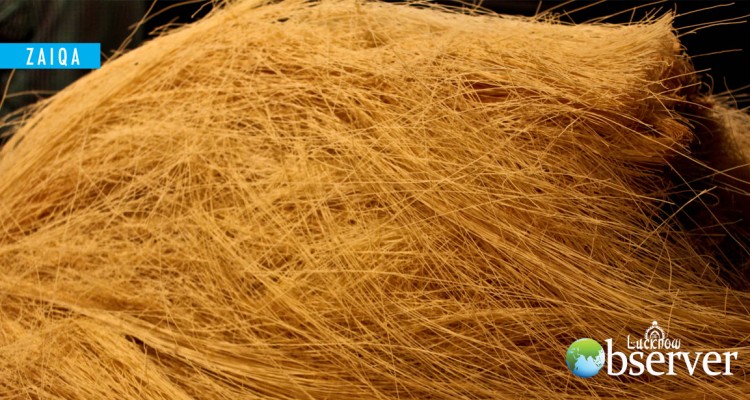The Strands and Bundles of Happiness Called Sewain
Nikita Gupta
Eid has the sky lit with jubilant fireworks, the divine, elusive, crescent moon smiling over wishes cupped in hands, closer earth, joyful embraces and the irresistible aroma of delectable food preparations; such is the excitement infused by this festival.
The most important dish that is prepared on Eid, its name synonymous with it and a commanding priority on the food lover’s list during the festivity is the delectable and delightful sweet called sewain- the first food that is given to the guests, on the sighting of the moon and later celebrating the joyous event with the sweet, syrupy dish.
Strands and bundled bands of sewain adorn and dominate the bustling eid bazaars continuing brightly into nights, burqa clad women securing their buy with its supply. This all-essential ingredient of eid festivity has the same sweet intrigue attached to it as its flavor. Cooking this simple looking dish to perfection is no easy feat and each household, it can be said, has a unique variant to offer. It’s either made in milk in a syrupy preparation or a drier one with khoya, and sugar syrup, both mouth watering saffron concoctions with generous and sumptuous addition of dry fruits. Four to five varieties can be found in the market, varying in appearance, colour, texture, thickness etc.
The most highly prized and in demand is the Benarsi Kewami sewain, which has strands as thin as hair and thus, requires more extensive efforts. Its preparation entails the use of an equivalent amount of khoya, thus adding to its cost. Other varieties include, Rumali sewain, hath or machine sewain and Imami sewain or Laccha. The Benarsi type is also called Benarsi Chatta because its fine strands are rolled in to look like a beehive.
Benarsi Laccha can be put directly into milk and served while Imami must be boiled in milk. The colour variations are only due to differences in cooking as roasting or food colour. The white is less preferred. The orange coloured sewain has Zarda or saffron in it and the brown is roasted to that hue. Sewain’s value also depends on what medium is used for the frying, with the one fried in desi ghee making the most delicious buy. In the past sewain was prepared by hands, rolling out the dough, drying it in the sun before it was roasted and before it was boiled in milk. But it is impossible to meet the demand of the rising numbers with handmade sewain and in limited time. Machines achieve the task producing it the same way as noodles, with similar drying in the sun, though its deep fried and not roasted, and packaged for sale.
Interestingly, what is widely accepted as a Muslim delicacy was also primarily made in Holi by Hindus as well. With the coming of the Mughals this delicacy was added to the Muslim milieu and emerged as a prominent part of the festivity of eid. It still finds its place in Hindu festivals during Nag Panchmi in a much simpler and elaborate form, more like a kheer than the delicate and richly flavored sewain in sugar syrups or milk.
The Sewain’s most essential ingredient is the love with which it is prepared and the Rozedar’s elation, the festivity following a month of devout fasting and prayer. It is a token of shared joy and brotherhood and people joined in communal sweetness.
Writer is a student and her passion is painting
(Published in The Lucknow Observer, Volume 2 Issue 16, Dated 05 July 2015)

